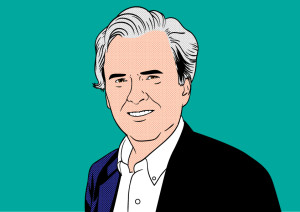What Travel Apps Are On Your Phone?
By Robert McGarvey
A new Oracle report came as a wake-up call for me. Said Oracle: we are using a lot of travel apps. Quite happily.
At first I snorted at this and then I recognized that, increasingly, I personally am making considerable use of apps – just not travel apps so much.
Should I do a rethink?
I do use Headspace and Mondly (language learning), pretty much daily on my Pixel phone. Google’s Fit is my daily companion as it tracks my walking and meditation. I use SeatJunky often (hunting for free seats at cultural events). Of course I use Facebook on my phone, also a couple of banking apps and PayPal. The list could go on. But the point is just that, definitely, I make growing use of phone apps.
Five years ago I used pretty much no apps with any regularity but apps have crept into my life.
But not travel apps so much.
The Oracle report tells me to rethink that.
According to Oracle, “Branded restaurant and hotel apps are very popular; almost a quarter of global consumers have at least one hotel or restaurant app on their mobile devices.” The exact number of consumers who use the travel apps, per Oracle, is 23%.
Those who use them use them often, too. Said Oracle: “Branded restaurant and hotel apps are being used weekly; 70% of the hotel/ restaurant branded app users say they use those apps at least once a week.”
For point of comparison, we use mobile banking apps more – but travel apps are surprising strong. Here is data from a Federal Reserve study: “The Fed survey found that 43 percent of all mobile phone users with bank accounts had used mobile banking in the previous 12 months, up from 22 percent in the agency’s 2011 survey. Among mobile banking users with smartphones (cell phones with internet connectivity), 53 percent with bank accounts used mobile banking in the previous 12 months.”
As far as travel apps go, once we use one, we seem open to using more. Oracle added: “Once consumers engage with branded apps, they’re open to using several; two thirds of the consumers using hotel or restaurant apps have at least three of them on their devices.”
A last bit from Oracle: “Branded apps are more popular than third party ordering apps – only 20% of global consumers have an app for a third party aggregator.”
It’s the last in fact that surprises me. I do have, and have used, HotelTonight, OpenTable, HipMunk, and a few others.
As for branded apps, I have on my phone Uber (used a lot), United, American Airlines, Delta, My TSA, and, nope, not a single hotel branded app. I also have no restaurant apps. And I’ve never used the airline apps.
Maybe it’s my age. Said Oracle: “Only 9% of consumers aged 55+ have a restaurant or hotel app on their mobiles, compared to 31% of millennials.”
I’m in sync with this however: “20% of global consumers have at least one app for a food delivery service on their devices.” In my case it’s Ubereats, also Amazon Prime Now (which I have used on several occasions). Which puts me in line with this Oracle finding: “28% of global consumers said that they have paid for food and drink from an app on their mobile devices at least once.”
It worked fine for me, by the way. I just don’t order much takeout food and so haven’t had a need for the apps anyway.
You are sitting out hospitality apps? Oracle said a lot of us do. “43% of global consumers say that they do not use hospitality apps.” This also is age influenced. “70% of the 55+ generation do not use apps in any way, compared to just 26% of millennials,” according to Oracle.
Tell you the truth, however, I am now downloading more travel apps and will begin using them because I am getting very accustomed to using apps (like Headspace) every day.
That’s the reality of mobile: the more we use it, the more we use it and, suddenly, we see the convenience of having what amounts to a mini computer in our pocket.
Then too, the power and ease of use of all mobile apps is much higher than it was when the iPhone launched 11 years ago (or the apps we had on our Palm Pilots before then).
My advice: download three or four travel apps and, probably, you’ll begin to find utility and, no, I’m still not downloading any hotel apps – and year ago research from business intelligence firm L2 dismissed the lot as junk. As for airlines, here’s a roundup of the best. And here’s PCMag’s roundup of the best in all categories.
Happy downloading.
